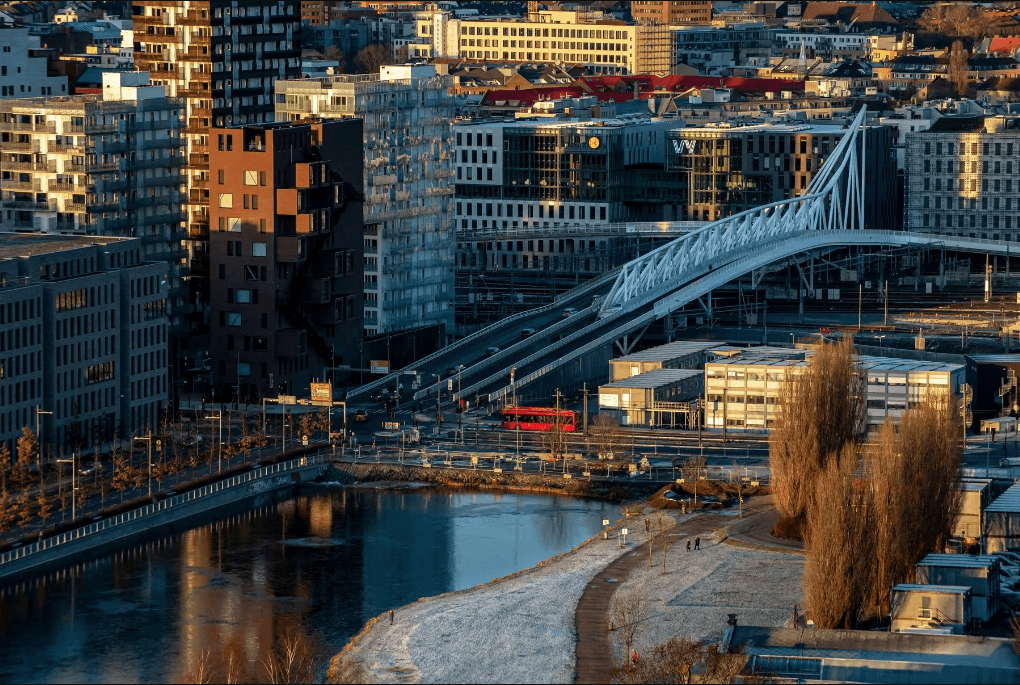Buildings and construction are responsible for 39 percent of the carbon emissions in the world. Operational emissions, meaning the energy required to heat, cool, or light a building, account for 28 percent of overall emissions. As the construction sector is a significant driver of climate change, there’s substantial potential for improvement and environmental action. The World Green Building Council believes that the building and construction sector can eliminate carbon emission by 2050, through the global spread of net-zero energy buildings.
A net-zero energy building, also known as net-zero carbon building, is one that doesn’t have any carbon emissions during their operations. They achieve this via architectural elements that provide high levels of both energy efficiency and generation.
From a modest holiday villa to a large office, these net-zero energy buildings of various sizes are bellwethers to a shifting mindset in architecture.
Big: A Net-Zero Energy Headquarters in Maryland (US)
Most urban offices are cramped for space — nevermind the ability to generate energy through on-site solar panels or wind turbines. But the biotechnology company United Therapeutics took on the arduous challenge of building a net-zero building in the middle of a bustling city — and succeeded in it.
The Maryland-based headquarters of the company, known as Unisphere, is currently the largest commercial net-zero building globally. It uses a mix of advanced technologies such as geo-exchange wells drilled into the ground and 3,000 solar panels to generate more energy than it needs.
United Therapeutics claimed that the cost of this campus wasn’t much more than some of the company’s earlier ones, although there’s no doubt the net-zero energy building will also save them large amounts in the long run.
Medium: A Net-Zero Energy Design School in Singapore
The National University of Singapore (NUS) makes sure to multiply the zero-energy buildings by raising architects and designers in them.
Launched in 2019, the SDE4 building of NUS School of Design and Environment generates its energy by some 1,200 photo-voltaic solar panels, saving up to USD 180,000 a year.
SDE4 also boasts a hybrid cooling and ventilation systems and architectural structures that provide much-needed shade in the tropical climate of the island-nation.
Nirmal Kishnani, then Vice Dean at NUS SDE says: “Sustainability has become an important part of what we teach. The architecture of the school needed to match the pedagogy of the school. If this is done right it would not only add credibility to what we teach but it would allow the use of the building as a teaching aid and research scaffold.”
Small: A Holiday Home in Rural Spain
A holiday home in Natural Park of Valles Pasiegos in Northern Spain named Villa Slow proves that zero-energy buildings can be accessible to the masses.
Architect Laura Alvarez, who grew up in the region, designed the net-zero energy building as she longed for “a place where you can be warm when it is cold outside and be fully connected to the outside when the sun shines”.
“The heat pump is connected to the network and produces five kilowatts of energy for each kilowatt that it takes from the network. So, it produces more energy than it consumes,” said Alvarez. She modeled the design over a traditional “cabaña pasiega” (peasant cabin) and used ancient stone walls to maximize insulation.
As the number of net-zero energy buildings continues to soar, the unassuming house proves that they don’t always have to be large-scale commercial or public projects to make a difference.











